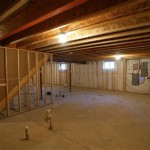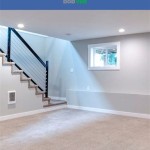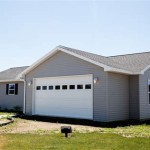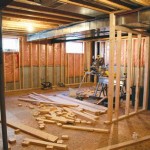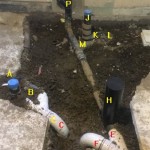What To Do With Basement Floors: Enhancing Functionality and Value
The basement, often relegated to storage space or a forgotten corner of the home, represents a significant opportunity for increasing living space and property value. The foundation of a functional and aesthetically pleasing basement is the flooring. Selecting the appropriate flooring material and preparing the subfloor are crucial steps in transforming a basement into a comfortable and usable environment.
Understanding the unique challenges posed by basement environments is paramount. Basements are inherently susceptible to moisture, temperature fluctuations, and potential flooding. These factors can significantly impact the longevity and performance of various flooring options. Therefore, careful consideration must be given to choosing materials that are resistant to these conditions and that can withstand the test of time.
Furthermore, the intended use of the basement space should heavily influence the flooring decision. A home theater, a children's playroom, a home office, or a guest suite each demand different qualities from the flooring. Durability, comfort, acoustics, and aesthetics should all be weighed against the specific needs of the space.
Addressing Moisture Concerns
Moisture mitigation is the first and arguably the most important step in preparing a basement floor. Hydrostatic pressure, the force exerted by groundwater against the foundation, can drive moisture through the concrete slab. This moisture can lead to mold growth, structural damage, and discomfort for occupants. Before any flooring is installed, the moisture levels of the concrete slab must be thoroughly assessed.
Several methods can be employed to test for moisture. A simple plastic sheet test involves taping a square of clear plastic to the concrete floor and observing for condensation after 24-48 hours. More sophisticated tests, such as calcium chloride tests, measure the moisture vapor emission rate (MVER) of the slab. The MVER indicates how much moisture is evaporating from the concrete over a given period.
If moisture levels are elevated, steps must be taken to mitigate the problem. Exterior waterproofing measures, such as installing perimeter drains and applying a waterproof coating to the foundation walls, can help to reduce hydrostatic pressure. Interior remedies include applying a moisture barrier or sealant to the concrete slab. These barriers prevent moisture from migrating through the slab and damaging the flooring above. Dimple mats, which create an air gap between the concrete and the flooring, can also be used to allow moisture to evaporate without affecting the finished floor.
Choosing a flooring material that is naturally resistant to moisture is also critical. Materials like epoxy, luxury vinyl tile (LVT), and certain types of tile are less susceptible to damage from moisture than materials like hardwood or carpet. Even with moisture-resistant flooring, it's essential to address the underlying moisture issues to ensure long-term success.
Selecting Appropriate Flooring Materials
The market offers a wide variety of flooring materials suitable for basement applications, each with its own set of advantages and disadvantages. The selection process should consider the factors mentioned earlier, including moisture resistance, durability, comfort, aesthetics, and budget.
Concrete staining and sealing provides a cost-effective and durable flooring option. Staining allows for customization of the floor’s appearance, while sealing protects the concrete from staining and moisture penetration. This option is suitable for areas where a more industrial or minimalist aesthetic is desired. However, concrete can be hard and cold underfoot, and it may not be ideal for areas where comfort is a priority.
Epoxy flooring offers a seamless and highly durable surface that is resistant to moisture, chemicals, and stains. Epoxy is available in a wide range of colors and finishes, and it can be customized with decorative flakes or metallic pigments. This makes it suitable for workshops, garages, and other areas that require a high degree of durability and ease of cleaning. Epoxy can be more expensive than other options and requires professional installation.
Luxury Vinyl Tile (LVT) and Luxury Vinyl Plank (LVP) have become increasingly popular for basement flooring. These materials are waterproof, durable, and relatively easy to install. They are available in a wide range of styles that mimic the look of hardwood, tile, and stone. LVT and LVP provide a comfortable and attractive flooring solution that is well-suited for living areas, playrooms, and home offices.
Tile, including ceramic and porcelain, is another excellent option for basement flooring. Tile is waterproof, durable, and resistant to stains and scratches. It is available in a vast array of colors, patterns, and sizes, allowing for a wide range of design possibilities. Tile can be cold and hard underfoot, so it may be beneficial to install radiant floor heating for added comfort.
Engineered hardwood offers the appearance of solid hardwood but with greater dimensional stability, making it less susceptible to warping or cupping in humid environments. Engineered hardwood is constructed from multiple layers of wood veneer bonded together, with a top layer of solid hardwood. While more moisture-resistant than solid hardwood, engineered hardwood is still vulnerable to excessive moisture and should only be installed in basements with proper moisture control.
Carpet offers warmth and comfort underfoot, making it a popular choice for living areas and bedrooms. However, carpet is highly susceptible to moisture damage and mold growth, making it a less ideal choice for basements. If carpet is desired, it is essential to install a moisture barrier underneath and to choose a carpet with a low pile height and synthetic fibers that are less absorbent than natural fibers.
Rubber flooring is a resilient and durable option that is suitable for gyms, playrooms, and other areas where impact resistance is important. Rubber flooring is available in tiles, rolls, and mats, and it can be easily installed over a concrete subfloor. Rubber flooring provides excellent cushioning and sound absorption, making it a comfortable and quiet flooring option.
Proper Subfloor Preparation
Regardless of the flooring material selected, proper subfloor preparation is essential for ensuring a successful installation. The subfloor is the surface upon which the flooring is installed, and it must be clean, level, and dry.
Before any other work is performed, the existing concrete slab should be thoroughly cleaned. This involves removing any dirt, debris, adhesive residue, or existing coatings. A scraper, wire brush, and vacuum cleaner can be used to remove loose materials. Stubborn stains or residues may require the use of a chemical cleaner or degreaser.
The levelness of the concrete slab should be assessed using a long straightedge and a level. Any unevenness or imperfections should be addressed before installing the flooring. Small cracks and imperfections can be filled with a concrete patching compound. Larger cracks or significant unevenness may require the application of a self-leveling compound. Self-leveling compounds are liquid mixtures that are poured onto the concrete floor and allowed to spread and harden, creating a smooth and level surface.
In some cases, it may be necessary to install a new subfloor over the existing concrete slab. This can be done using plywood or oriented strand board (OSB). A subfloor can provide a smoother and more stable surface for the flooring, and it can also help to insulate the floor and reduce noise transmission. A vapor barrier should be installed between the concrete slab and the subfloor to prevent moisture from damaging the wood.
After the subfloor is prepared, it should be allowed to dry thoroughly before the flooring is installed. The moisture content of the subfloor should be checked using a moisture meter to ensure that it is within the acceptable range for the chosen flooring material. Installing flooring over a damp subfloor can lead to problems such as mold growth, warping, and adhesive failure.
When installing the flooring, it is important to follow the manufacturer's instructions carefully. This includes using the correct adhesive, allowing for proper expansion gaps, and ensuring that the flooring is properly aligned. Professional installation is recommended for some flooring materials, such as epoxy and tile, to ensure a high-quality and long-lasting result.
Finally, consider the overall design of the basement. The flooring should complement the walls, ceiling, and other elements of the space. Consider color schemes, lighting, and furniture when selecting the flooring. A well-designed basement can add significant value to the home and provide a comfortable and functional living space for years to come.

15 Diy Basement Flooring Ideas Affordable Options For Basements

Best Basement Flooring Options Forbes Home

15 Diy Basement Flooring Ideas Affordable Options For Basements
.jpg?strip=all)
5 Of The Most Durable Basement Flooring Options

Best Budget Basement Flooring Ideas

How To Carpet A Basement Floor Diy Family Handyman

Floor Drains Finished Basements Best Practices Solutions Csg Renovation

What Is The Best Flooring To Put On A Concrete Basement Floor

The Best Flooring Options For Your Basement America

Unfinished Basement Ideas On A Budget Catholic Home

